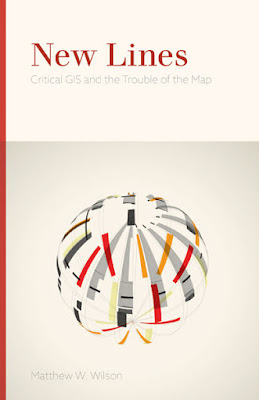'Training the Eye': formation of the geocoding subject
Social & Cultural Geography has published my manuscript, as part of the special issue: The Limits of the Body, edited by Sebastian Abrahamsson and Paul Simpson.
Abstract:
From 2004 to 2007, a nonprofit organization in Seattle conducted over twenty-five street surveys in ten neighborhoods. Participants in these surveys collected geographic data about community 'deficits' and 'assets' using handheld devices, while walking around their local neighborhoods. These residents marked graffiti, litter, vacant buildings, and abandoned automobiles, as well as, 'friendly' business districts, appropriate building facades, and peopled sidewalks—all among their categories of interest, initially borrowed from a New York City foundation responsible for developing the handheld devices. Here, I analyze the geocoding protocol, 'Training the Eye', that was created by the New York City foundation and was adapted by the Seattle nonprofit. This technology of citizen engagement in governmental practice enacts an embodied cartographic vision that is productive of liminal subjectivities. These practices of geocoding, of assessing place in space, are intensely bodily, both in their messy enactment of digitally-extended vision and in their data-based imaginings of bodies at the margins. I draw upon theories of the cartographic gaze to discuss how technologies of vision constitute particular urban imaginations and discuss how subjects are formed through the discourses and practices of geocoding.
Abstract:
From 2004 to 2007, a nonprofit organization in Seattle conducted over twenty-five street surveys in ten neighborhoods. Participants in these surveys collected geographic data about community 'deficits' and 'assets' using handheld devices, while walking around their local neighborhoods. These residents marked graffiti, litter, vacant buildings, and abandoned automobiles, as well as, 'friendly' business districts, appropriate building facades, and peopled sidewalks—all among their categories of interest, initially borrowed from a New York City foundation responsible for developing the handheld devices. Here, I analyze the geocoding protocol, 'Training the Eye', that was created by the New York City foundation and was adapted by the Seattle nonprofit. This technology of citizen engagement in governmental practice enacts an embodied cartographic vision that is productive of liminal subjectivities. These practices of geocoding, of assessing place in space, are intensely bodily, both in their messy enactment of digitally-extended vision and in their data-based imaginings of bodies at the margins. I draw upon theories of the cartographic gaze to discuss how technologies of vision constitute particular urban imaginations and discuss how subjects are formed through the discourses and practices of geocoding.


Comments
Post a Comment